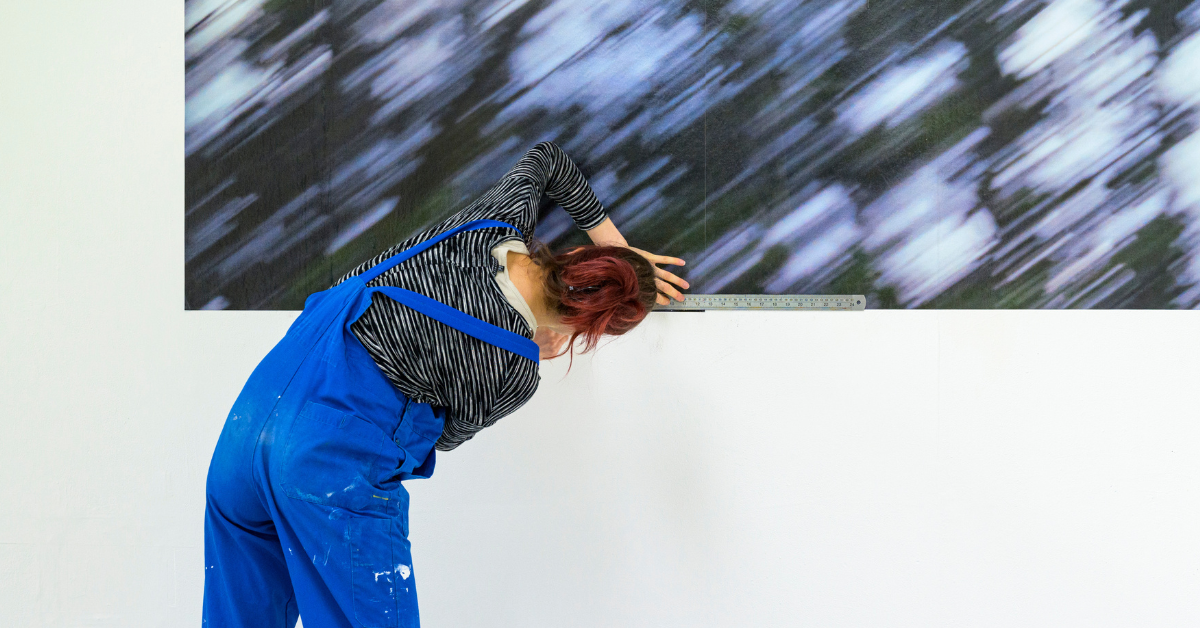
The course structure provides you with the opportunity to develop your work in the wider context of fine art through the specialist areas of painting, sculpture, printmaking and drawing. The emphasis is on supporting and challenging you to develop an approach to art practice based on your own creative interests and ideas, alongside an exploration of questions about what painting, sculpture, printmaking and drawing might be now, given their historical roots, materials, processes and current discourses. Some elements of the course have a specific focus based on your choice of specialism, while group tutorials, live projects and other sessions, such as professional practice, are shared across the Fine Art course.
You are introduced to contemporary practice through the historical genres of fine art with a particular emphasis on the technical use of materials and processes, alongside art histories research through practical workshops, seminars and lectures. The teaching on the Fine Art course aims to nurture your ambitions through regular discussion and advice in one to one tutorials and group critiques. You will be supported and challenged to develop an approach to self-directed study through the development of specialist skills and critical thinking as the year progresses.
On this Fine Art course you are offered the opportunity to engage in the wider context of fine art through the specific and expanded fields of painting, sculpture, printmaking and drawing. You engage in visual and contextual research and studio activity through a series of projects that consider personal narratives that relate to themes such as: transcription, the body, landscape and the object. As the year progresses you undertake increasingly self-directed projects and test out approaches to presentation and display.
The Art Histories Programme runs throughout the year, locating fine art practice in an historical and contemporary context and informing discussions in group critiques and seminars.
Drawing is an important component of the year enabling you to investigate its role as both a form of research and as a practice in its own right.
Within this carefully structured framework, you establish a basis for your own contribution to the wider cultural conversation about painting, sculpture, print, drawing and installation. This is celebrated in an end of year exhibition with second year students that takes the form of an off site ‘live project’ enabling you to develop important professional practice skills.
The second year sees a shift in emphasis towards a more extended period of self directed studio activity with a focus on practical and theoretical research methodologies and curatorial and exhibiting possibilities related to your practice. You will develop your own ideas through studio practice involving direct material research supported by group critiques, seminars and regular tutorial input from the range of tutor artists teaching on the course.
The Art Histories programme explores the history of ideas, enabling you to develop your critical understanding of the key artists, thinkers and theories that profoundly influence contemporary art practice. Your own ideas will be enriched and informed through engagement in this programme that has been carefully designed to compliment your studio activities.
The Professional Practice Programme sets out to prepare you for life after art school through a range of study visits, seminars and artist talks by art world professionals. In addition competitions and the off site live project exhibition offer valuable opportunities for you to develop as a professional artist.
In addition to the structured classes, the Drawing Studio offers opportunities to join workshops and some evening sessions.
The Third year is a focused and intense period for research and studio practice development. You will set out your own programme of study with two key outputs: the production of a substantial body of work towards an end of year exhibition and the writing of a dissertation exploring a theme you have chosen that closely relates to your studio practice research.
Throughout the year you will benefit from regular discussion and feedback from tutors, visitors and your peers. The Professional Practice Programme is expanded to expose you to a range of art world professions and activities in private, public and corporate contexts. Seminars and workshops continue during the year and you will be encouraged to research and test out approaches to showing your work in preparation for the Degree Show exhibition at the end of the course.
The Degree Show is one of the key highlights of the Art School calendar with a large number of visitors from members of the general public to art professionals including gallerists and curators. Graduates have gone on to receive commissions and solo shows based on connections made during the exhibition.


